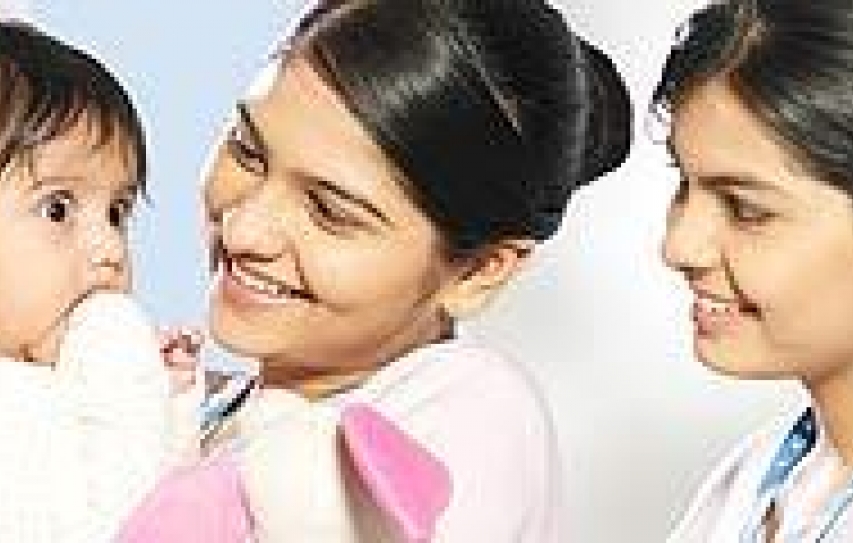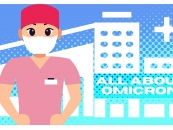
There’s still hope: An introduction to India’s healthcare initiatives
by The Daily Eye Team September 6 2013, 2:38 pm Estimated Reading Time: 3 mins, 56 secsDr Poonam Kuruganti August 17, 2012 at 7:58 pm
Over the post-independence years India has launched several health programs. In this article we highlight a few such programs that have improved or have the potential to improve the health of India’s populace.
National Rural Health Mission (NRHM), Ministry of Health and Family Welfare
“Health is a State subject and the Government of India has always tried to work in partnership with States to meet people’s needs” wrote Mr Ghulam Nabi Azad, Minister, Ministry of Health and Family Welfare, in a 5 year progress update of the NRHM. NRHM was launched in 2005 to provide accessible health services in rural areas. This agenda involved building infrastructure and healthcare staff with a female accredited social health activist (ASHA) in every village. The NRHM has been quite successful in achieving several of its projected targets. NRHM has significantly reduced the incidences of several diseases by increasing the number of health facilities (primary health centres and hospitals), care providers (ASHAs, doctors, nurses and paramedic staff) and community education. However, all of the NRHM’s expected outcomes have not materialized and there continues to be a critical shortage of trained medical professionals and access to medications.
National AIDS Control Organization (NACO), Department of AIDS
NACO aims to prevent HIV infection as well as offering support to HIV/AIDS patients. Its mission is accomplished by educating, counselling and testing services. Latest reports indicate that the number of new HIV infections has fallen by 50-60% and the current HIV/AIDS population, in India, is approximately 2 to 3.1million (3.4-9.4 million in 2002). However, infection rates continue to be high or increasing among certain subsets of the Indian population, that is, males (60%), those aged 15-49 years (89%), drug abusers (9%), homosexual males (6%) and female sex workers (5%).
Kerala Primary Health Care Model
In the 1990s, Kerala, aided by the high literacy rate (and hence high number of trained medical professionals) as well as organized local governance, embarked on a systematic approach of community involvement to establish a functional primary health care (PHC) centre in every village. Kerala attained an enviable drop in its infant and maternal death rates and increased life expectancy, at birth, to 70-76 years – well above the national average of 63-65 years. However, this model needs to be augmented with resources to address illnesses such as acute diarrhoeal diseases, measles, pneumonia, pulmonary tuberculosis and dengue.
High-potential game-changers
Besides inadequate infrastructure resources and medication inaccessibility the single-most weak point in India’s public health care change is the lack of qualified doctors and medical staff – a crucial connection between the patient and health services. Today, India produces only 50-60% of the doctors it requires for its medical needs of which only 2% join primary and community health centres to service 70% of its rural population. In order to address these shortages, the government has initiated and proposed several programs. A few of them are outlined below
| Government Initiative | Purpose | Issue(s) addressed |
| Telemedindia (Telemedicine in India) | Combines information and communication technologies (ICT) with Medical Science for clinical records, diagnostic tests, video consultations and medical education (several government and private healthcare networks established) | To increase healthcare services and education to rural (and remote) parts or under emergency conditions |
| Compulsory Licensing | Grant non-patent holder(s) permission to manufacture patented drugs not available at an affordable price (1st grant for cancer drug Nexavar in March 2012) | To increase accessibility to medications |
| Bachelor of Rural Health Care (BRHC) | A 3½ year rural health care course (proposed in Rajya Sabha) | To increase rural healthcare professionals |
| National Programme for Healthcare of the Elderly (NPHCE) | To be test-launched in 100 districts of the country in 2012-17. | To reduce the incidence of non-communicable illnesses in the elderly |
| National Programme for Prevention and Control of Cancer, Diabetes, Cardiovascular Diseases and Stroke (NPCDCS) | To be test-launched along with NPHCE in 100 districts of the country in 2012-17 | To reduce the incidence of lifestyle/modern/developed world diseases |
| Free Medicines for All | Rs 28,560 crore plan to provide 348 medicines for all and must-prescribe generic drugs mandate to doctors (proposed 2012-2017) | To increase accessibility to medications |
| Healthcare for All by 2020 | All residents will have healthcare coverage via a combination of public, employer and private sources. An entitlement package will include treatments, health promotion and disease prevention (proposed) | To uphold the fundamental right of all citizens to adequate health care |
The Indian government is making a serious attempt to ensure the robust health of its citizens by implementing a variety of programs and schemes. The long-term success is eagerly awaited though difficult to predict.




-173X130.jpg)
-173X130.jpg)
-173X130.jpg)
-173X130.jpg)
-173X130.jpg)
-173X130.jpg)

-173X130.jpg)